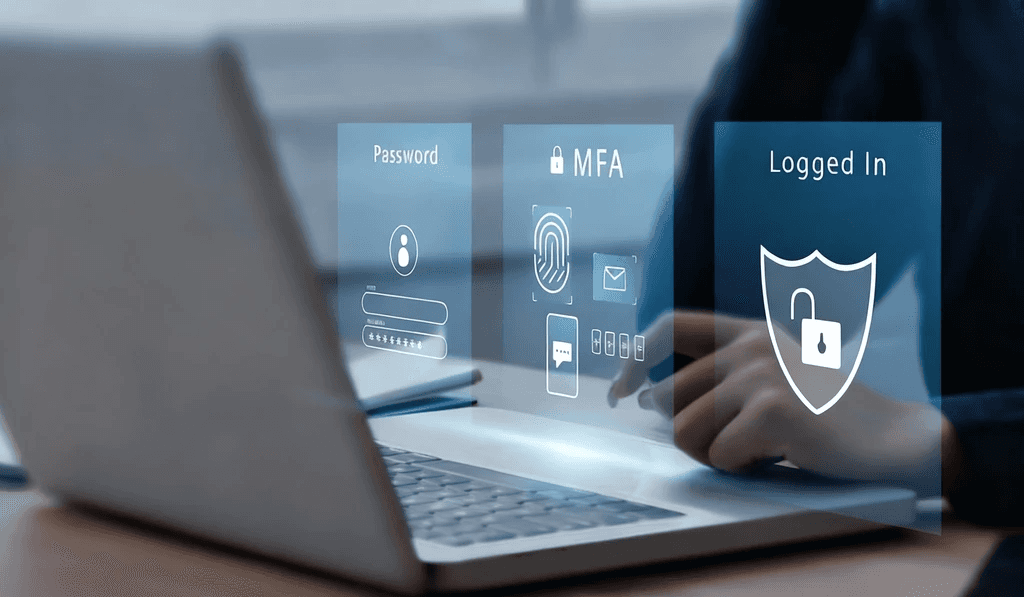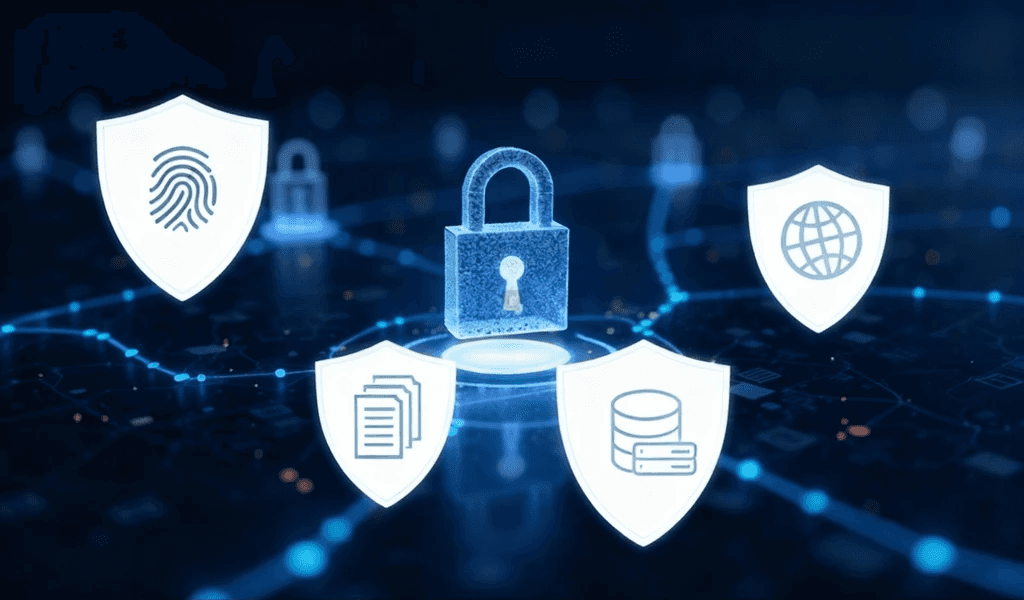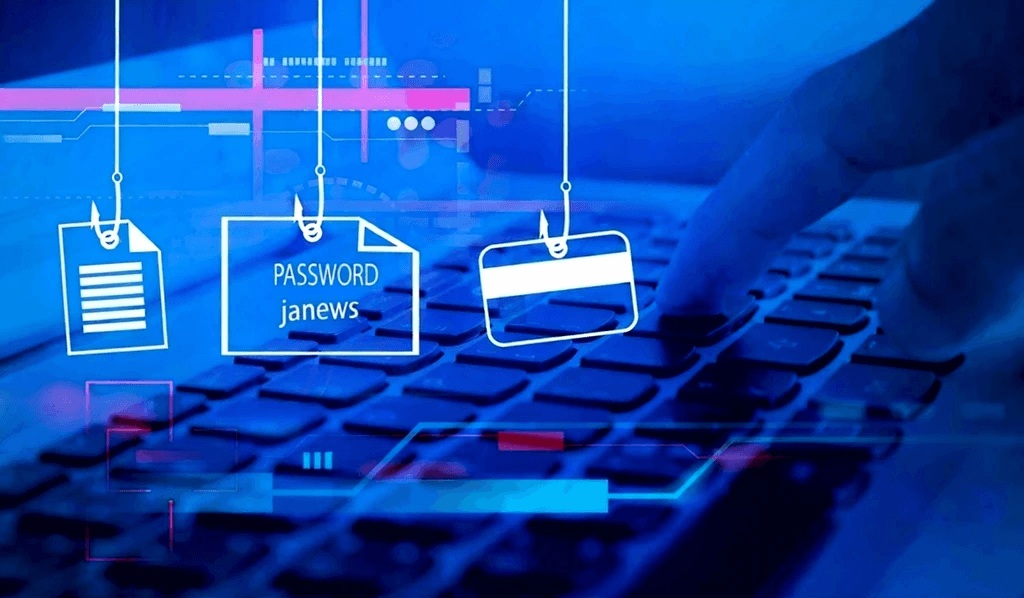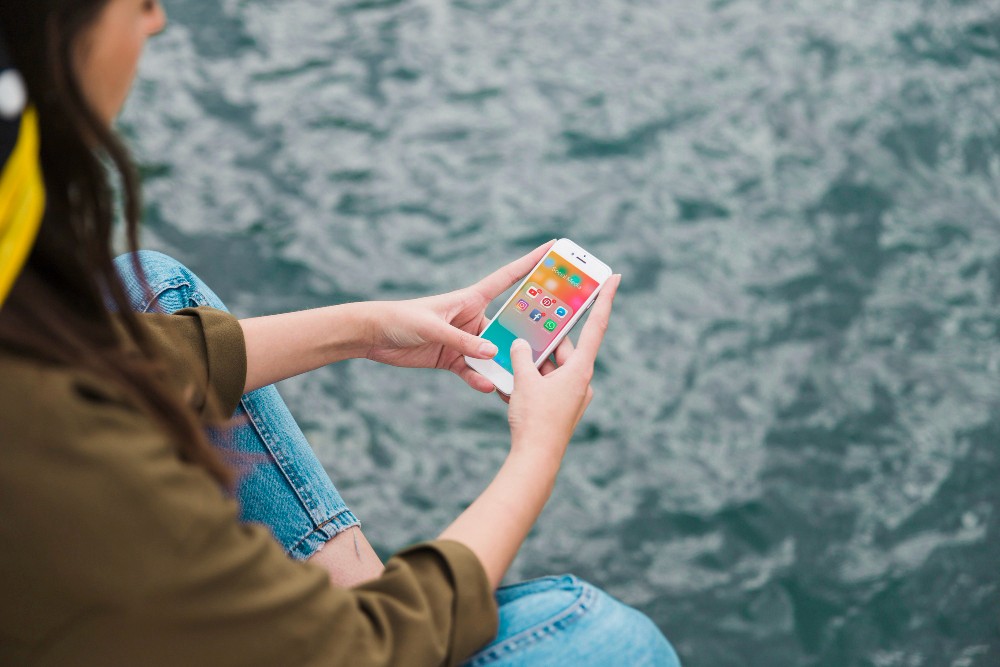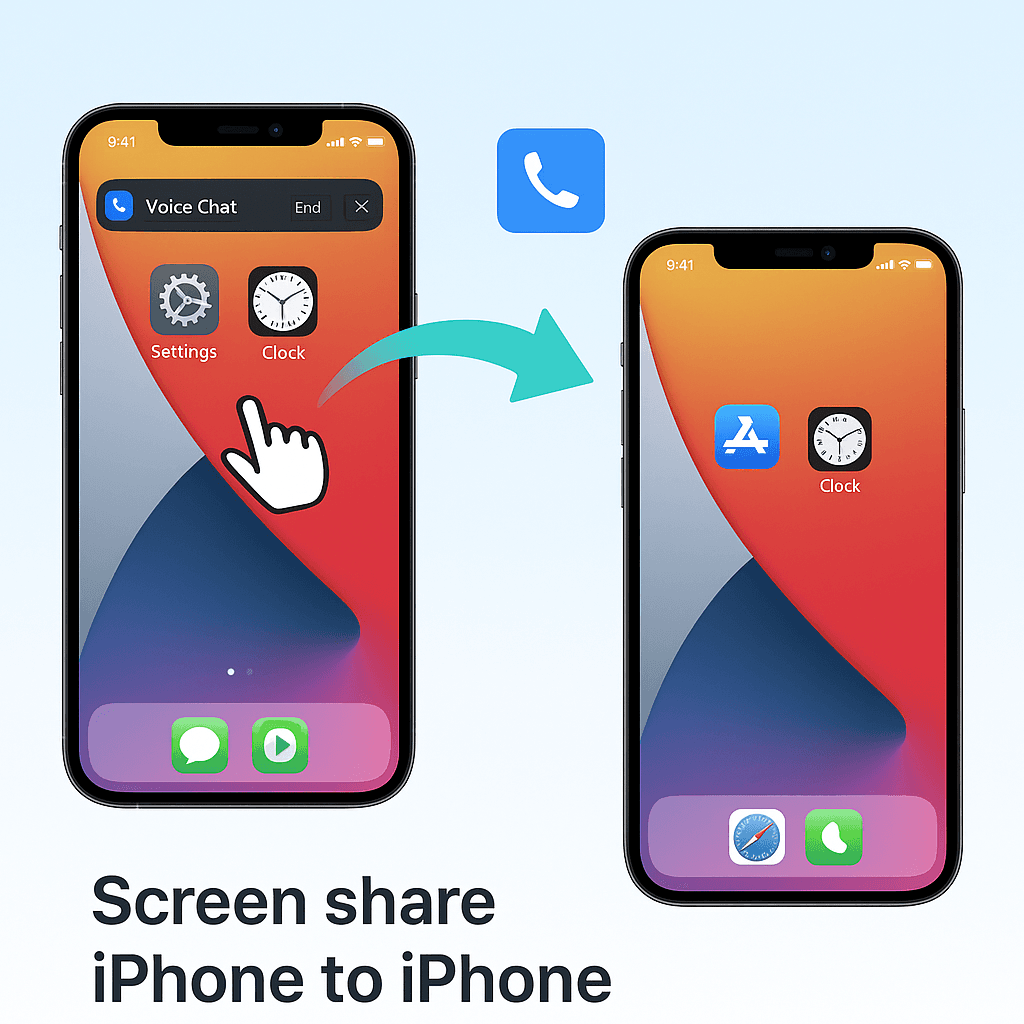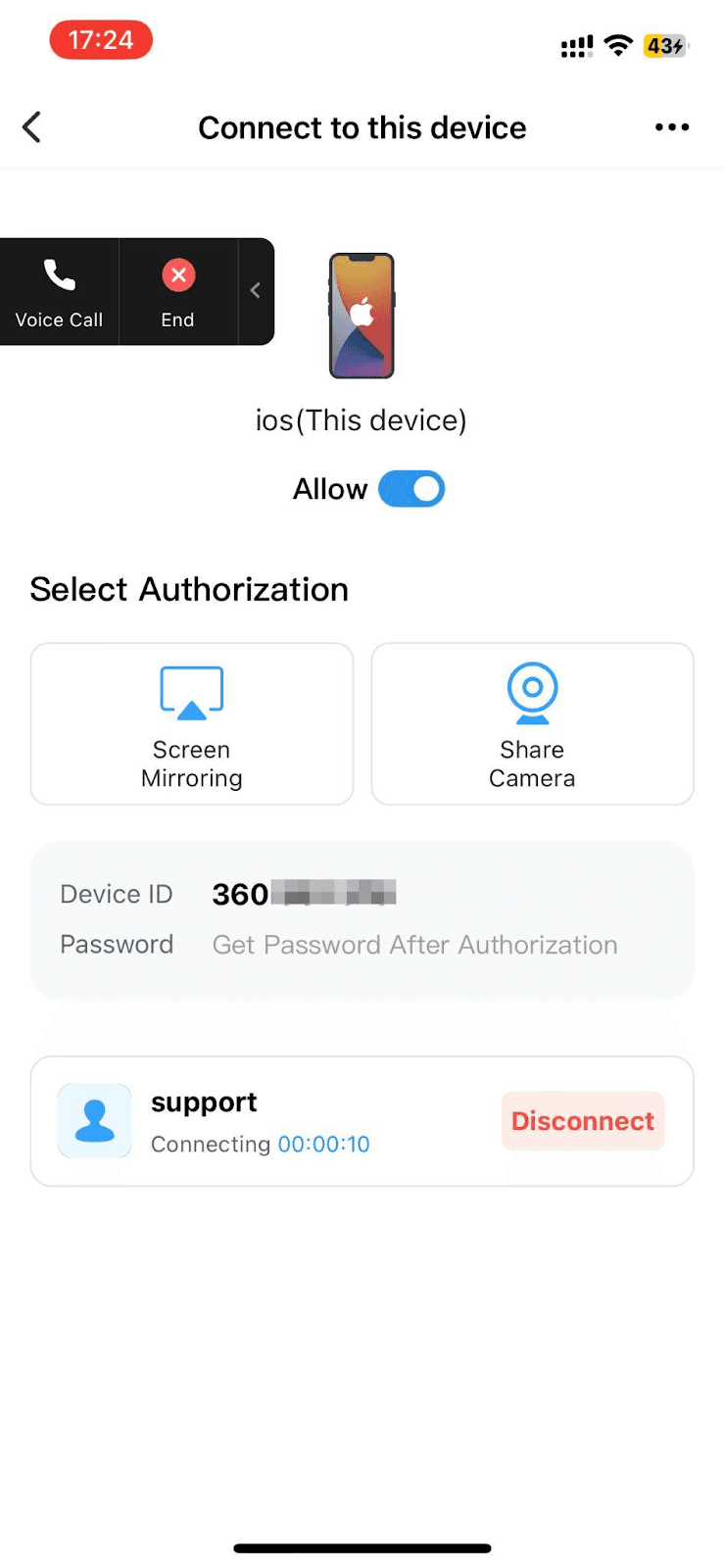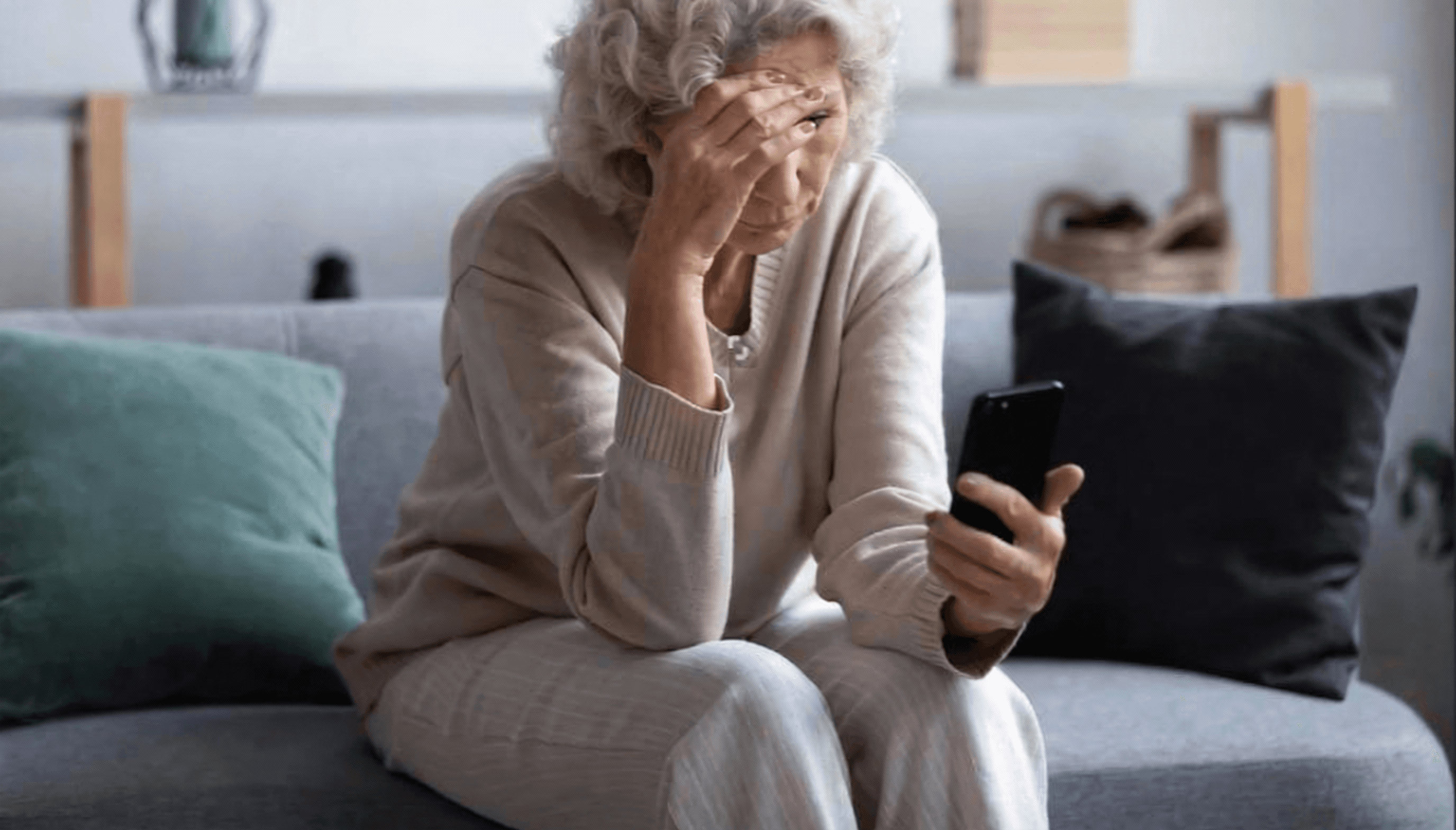自己用Mac筆電,公司或家中桌機是Windows是很普遍的情況,你可能希望使用 MacBook 或 iMac 遠端連接到 Windows 電腦,來處理工作、存取檔案或支援客戶。不過,將 Mac 連接到 Windows 系統進行跨系統工作,存在鍵盤不一致、系統相容性或效能方面的障礙。
如果您正在尋找從 Mac 遠端連線到 Windows 的方法,本文介紹四種實用的解決方案:使用Windows官方的遠端桌面Microsoft Remote Desktop(現在叫Windows App),功能高級但也高價的 Apple Remote Desktop,與 Chrome瀏覽器更適配的 Chrome遠端桌面,或是強大的第三方工具 DeskIn,打破裝置以及網路的限制,不僅能輕鬆建立遠端連線,還具備進階功能。一起看看如何設定,使用這些工具實現從 Mac 無縫遠端存取 PC!
你可能感興趣:
👉 在 Windows 10 設定與使用遠端桌面連線|詳細教學與常見問題解法
Windows 官方:透過 Windows App 從 Mac 存取 Windows

從 Mac 遠端連線到 Windows 電腦其中一個可靠、最官方的方法就是使用Microsoft 提供的免費工具 Microsoft Remote Desktop,目前在 macOS 上的名稱為「Windows App」。可讓您從 MacBook 或 iMac 安全地遠端存取同一區域網路下的 Windows 電腦。
Windows App 支援完整的滑鼠鍵盤控制、螢幕適應、多螢幕操作、音訊與視訊傳輸,以及剪貼簿共用。也提供基本的檔案傳輸功能,並能存取企業環境,非常適合專業人士與 IT 支援團隊使用。但使用 Windows App有裝置限制和網路限制,需要在使用前確認清楚,如果你不想這麽麻煩,可以直接瀏覽本文的第二個無限制的方法,DeskIn。

👀 使用 Windows App 的限制:
裝置限制:需要 Windows 專業版(Pro)、企業版(Enterprise)或教育版(Education);不支援 Windows 家用版(Home)。
網路限制,設定複雜:只適合内網使用若要從外網連線,可能需要設定 VPN 或埠轉發。在企業環境中,嚴格的 IT 政策可能會導致連線中斷。
缺乏進階功能:如拖曳檔案傳輸或遠端喚醒,傳檔較慢且麻煩。
連線品質一般:若網路不穩定,效能可能下降,特別是當 Mac 進入睡眠模式時。
手機版功能陽春,只適合從電腦連到電腦,不適合臨時使用。
版本限制:官方遷移到Windows App之後Microsoft Remote Desktop不再提供支援,也無法新下載,部分功能限制使用。
如果您希望使用官方的軟體,主要在内網環境連線,而且以上的這些限制不會影響您使用,你可以依照下列步驟開始設定 Windows App:
步驟 1:從 Mac App Store 下載 Microsoft Remote Desktop(現稱為 Windows App),並開啟應用程式。
步驟 2:在 Windows 電腦上,前往「設定」 > 「系統」 > 「遠端桌面」,啟用遠端存取功能。
步驟 3:前往Windows 「設定」 > 「系統」 > 「關於」中查找您的電腦名稱,或在終端輸入 ipconfig 以取得 電腦 IP 位址。

步驟 4:在 Mac 上開啟 Remote Desktop App,點選「+ 新增 PC」,輸入Windows電腦名稱或 IP,並以您的 Windows 帳號登入。
步驟 5:根據需求調整顯示與音訊設定,接著點選「連線」開始使用遠端連線。
你可能感興趣:
簡單方法:使用 DeskIn 從 Mac 遠端存取 Windows 電腦

雖然 Windows App 提供較爲穩定方便的遠端連線,但對某些 Mac 使用者來說,它在靈活性、設定簡易度以及功能豐富度方面可能略顯不足,尤其是在需要跨區域網連線或是有更進階的傳檔、高效能作業的需求時。
這時,DeskIn 就是更人性化的替代方案。DeskIn是一款跨平台的遠端桌面工具,讓您可以隨時隨地從 MacBook 或 iMac 遠端控制 Windows 電腦。不需要兩個裝置在同一區域網路下,也沒有 Windows版本的限制,不論你是在家工作還是出差旅行,它都能提供順暢且安全的連線體驗,設定也比傳統工具更簡單。DeskIn直覺的操作介面與豐富的功能,讓他成為2025年最佳的免費遠端軟體之一,無論是存取檔案、檔案傳輸、甚至從 Mac 執行 PC 遊戲都非常合適。
👀DeskIn 作爲 Mac 遠控 Windows 電腦工具的主要功能和優勢:
設定簡單:不在一局域網下也可隨時隨地一鍵遠控,被控可以無需登
跨系統相容:可從 Mac 連線至任何 Windows 裝置。
低延遲遠端控制:會根據網路輸入與畫面自動優化,低於40ms延遲,操作流暢。
遠端檔案傳輸:無檔案大小或格式限制,可一鍵拖拽檔案,速度高達12MB/S。
支援 4K 與高幀率串流:最高可達 4K/60FPS 或 2K/144FPS,還有4:4:4真彩色編碼,視覺表現出色。
支援螢幕鏡像和延伸螢幕:可將 Windows 畫面鏡像或延伸至 Mac,輕鬆get雙螢幕。
支援無人值守存取與隱私保護畫面:即使遠端電腦無人操作,也能安全連線,可遮罩遠端螢幕,保護隱私。
DeskIn 設定教學:從 Mac 遠端控制 Windows 電腦
步驟 2:在 Mac 上開啟 DeskIn,輸入您 Windows 電腦上的 DeskIn 介面所顯示的「裝置 ID」與「密碼」,然後點選「連線」即可開始遠端操作。您將能即時操控 Windows 桌面,就像坐在電腦前一樣。

步驟 3:在遠端連線期間,您可以直接在 DeskIn 介面中探索其功能,例如:檔案傳輸、螢幕共享、手把(Gamepad)支援、多螢幕控制等。您也可以視需要切換「隱私模式」或「控制模式 / 僅檢視模式」。
使用 DeskIn,不需要設定 VPN、不需配置 IP,也不用擔心 Windows 版本的限制,這使它成為日常使用者與專業人士皆可輕鬆上手的遠端工具。

為什麼 DeskIn是你的最佳遠端桌面選擇?
在深入了解這兩款遠端工具後,你會發現雖然它們都能讓您從 Mac 遠端 操控 Windows 電腦,但在使用便利性、相容性與功能性方面卻有明顯差異。您可能也考慮其他的第三方遠端桌面,以下將從幾個關鍵層面切入,對比DeskIn、Microsoft Remote Desktop(Windows App)以及其他的第三方遠端桌面,告訴你爲什麽DeskIn是你的Mac遠端操控Windows電腦的最佳方案:
功能項目 | DeskIn | Microsoft Remote Desktop(Windows App) | 其他第三方遠端桌面 |
設定流程 | 登入即可使用,無需額外設定 | 需啟用遠端功能、查詢 IP,較複雜 | 需要自建架構,界面複雜 |
支援平台 | 任何新舊版本 Windows、macOS、iOS、Android互連 | 僅限 macOS 連線至 Windows,且限特定 Windows 版本 | 部分不支援行動裝置或行動裝置功能陽春 |
顯示與效能 | 支援最高 4K 60FPS、真彩色顯示、低延遲串流 | 一般顯示,無法做即時優化 | 自動調整解析度,網路不佳時模糊、延遲明顯。 |
檔案傳輸 | 內建高速跨平台檔案傳輸功能 | 僅支援基本檔案重導 | 傳輸速度慢,有檔案大小限制 |
安全功能 | 隱私螢幕、新裝置驗證、連線控制 | 基本加密,依賴作業系統安全設定 | 部分完全無需登入、使用ip即可連接,存在安全隱患 |
遊戲與創作應用 | 有針對遠端遊戲、設計的功能,可進行音訊傳輸 | 不支援遊戲或創作型工作流程 | 大部分沒有專門的遊戲模式和功能,色彩也不佳 |
價格 | 免費商用(最多 3 台設備),進階方案低至$ 9.9 | 免費,但依 Windows 版本而定 | 免費不可商用,付費方案價格高 |
如果您只需要一款簡單工具來進行基本的辦公操作,Microsoft Remote Desktop 就能滿足需求;但若您是進階使用者、遊戲玩家或需要高效能與靈活控制的遠端團隊,那麼 DeskIn 將是更現代化、更完整的解決方案。

額外方法1:透過 Apple遠端桌面連線到 Windows 電腦
Apple 遠端桌面為 macOS 使用者提供了一系列進階功能,它不僅能讓你操作遠端的 Finder 選單、傳輸檔案與資料夾,還能自動化執行任務。然而,其設定過程需要一定的技術熟悉度,且一次性買斷的訂閱價格較為昂貴(透過 Mac App Store 售價 $79.99)。
如果您的預算有限,且希望快速簡單地設定遠端控制 Windows 電腦,我們建議您考慮本文介紹的簡單方法——DeskIn。
以下是設定的基本步驟:
步驟1:在你的 Mac 上,點選蘋果選單並開啟「系統偏好設定」。
步驟2:點選「共享」,並勾選「遠端管理」的選項框。

步驟3:啟用遠端管理功能,並開始設定相關的存取權限。

步驟4:為遠端使用者選擇允許的操作,例如螢幕控制、檔案傳輸等。
步驟5:在 Windows 電腦上,啟用「遠端桌面」功能(需要 Pro 或 Enterprise 版本)。接著使用 Apple 遠端桌面中的網路檢視來尋找該電腦,點選「連線」即可。可透過選單列圖示來結束連線工作階段。
額外方法2:使用 Chrome 遠端桌面控制 Windows 電腦
Chrome 遠端桌面是一款免費、以瀏覽器為基礎的解決方案,可在包括 Windows、Mac、iOS 和 Android 在內的各種平台上運作。它的主要優勢之一在於其簡單性,無需複雜的設定或配置,非常適合僅需要一種簡單、無麻煩方式來存取其 Windows PC 的使用者。然而,它相對缺少更多進階的遠端控制功能。
若您是進階使用者、遊戲玩家或需要高效能與靈活控制的遠端團隊,請考慮本文介紹的第二個方法,DeskIn。
以下是在 Mac 電腦上使用 Micosoft Remote Desktop的基本步驟:
步驟1:請在您的 Windows PC 和您想用來進行遠端存取的裝置(Mac、Android 或 iPhone)上安裝 Google Chrome 瀏覽器。
步驟2:按照指示在您的 Windows PC 上啟用存取權限,並生成一組 PIN 碼來保護連線安全。

步驟3:在您的遠端裝置上(無論是瀏覽器還是應用程式),開啟 Chrome 遠端桌面。
步驟4:從裝置列表中選擇您要連線的目標 PC,然後輸入您先前設定的 PIN 碼以建立連線。
常見問題:關於從 Mac 遠端連線到 Windows 電腦
Q1:需要在同一個網路下,才能從 Mac 遠端連線到 Windows 嗎?
使用 Windows App 時,通常需要在相同區域網路中,或透過 VPN 模擬該環境;否則連線可能會失敗,或需進行埠轉發(port forwarding)設定,這對新手來說並不友善。
DeskIn 則內建雲端中繼伺服器,預設就支援跨網路連線。這對於需在不同地點或網路環境下工作的使用者來說,更加方便實用。
Q2:遠端連線時,我可以將檔案從 Mac 傳到 Windows 嗎?
Windows App 支援基本檔案重導,但僅限預先指定的資料夾,且傳輸能力有限,較適合輕量的檔案存取,不適用於即時傳輸。
DeskIn 則提供專屬的檔案傳輸介面,可進行即時拖放傳輸,速度高達 12MB/s,不受檔案格式限制。此外也支援剪貼簿同步與資料夾共用,適合進階工作流程。
Q3:我可以用這些 App 從 Mac 玩 PC 遊戲嗎?
Windows App 並非為高效能應用設計,不支援遊戲手把、幀率有限,操作延遲較高,不適合互動性高的內容。
DeskIn 則支援 60FPS 串流、低延遲輸入、手把直通支援,以及自定義鍵盤/滑鼠映射。雖然它不是完整的遊戲串流平台,但足以應付一般娛樂或中等需求的遠端遊戲體驗。
Q4:DeskIn 如何遠端開機?
使用DeskIn進行遠端開機,主要依賴其Wake-on-LAN (WOL) 功能。這需要您先在電腦上完成一系列設定,之後便能透過同一區域網路內的另一台已安裝DeskIn的裝置(例如手機或另一台電腦)來遠端喚醒目標電腦。
下面的表格整理了設定的主要步驟與重點:
步驟1:在Windows的「裝置管理員」中,於網路介面卡的電源管理標籤勾選「允許這個裝置喚醒電腦」,並在進階標籤啟用「收到Magic封包時喚醒」等相關選項。
步驟2:電腦開機時進入BIOS,在進階電源管理相關選單中,啟用「PCI-E喚醒」、「Wake on LAN」等功能。
步驟3:在作為輔助喚醒用的行動裝置或電腦上的DeskIn應用程式中,開啟「遠端開機支援(Wake On LAN)」選項。
結論
如果您只需要一種快速且免費的方式,從 Mac 遠端控制 Windows 電腦,Microsoft Remote Desktop(Windows App) 是不錯的選擇,尤其適合已擁有對應 Windows 版本與網路環境的商務使用者。
但若您追求更多功能、更高彈性與更佳操作體驗,DeskIn 更勝一籌。它免去技術障礙,涵蓋從工作到娛樂的多種情境,甚至在免費版中就支援如檔案傳輸、螢幕鏡像、4K 串流等強大功能。

自己用Mac筆電,公司或家中桌機是Windows是很普遍的情況,你可能希望使用 MacBook 或 iMac 遠端連接到 Windows 電腦,來處理工作、存取檔案或支援客戶。不過,將 Mac 連接到 Windows 系統進行跨系統工作,存在鍵盤不一致、系統相容性或效能方面的障礙。
如果您正在尋找從 Mac 遠端連線到 Windows 的方法,本文介紹四種實用的解決方案:使用Windows官方的遠端桌面Microsoft Remote Desktop(現在叫Windows App),功能高級但也高價的 Apple Remote Desktop,與 Chrome瀏覽器更適配的 Chrome遠端桌面,或是強大的第三方工具 DeskIn,打破裝置以及網路的限制,不僅能輕鬆建立遠端連線,還具備進階功能。一起看看如何設定,使用這些工具實現從 Mac 無縫遠端存取 PC!
你可能感興趣:
👉 在 Windows 10 設定與使用遠端桌面連線|詳細教學與常見問題解法
Windows 官方:透過 Windows App 從 Mac 存取 Windows

從 Mac 遠端連線到 Windows 電腦其中一個可靠、最官方的方法就是使用Microsoft 提供的免費工具 Microsoft Remote Desktop,目前在 macOS 上的名稱為「Windows App」。可讓您從 MacBook 或 iMac 安全地遠端存取同一區域網路下的 Windows 電腦。
Windows App 支援完整的滑鼠鍵盤控制、螢幕適應、多螢幕操作、音訊與視訊傳輸,以及剪貼簿共用。也提供基本的檔案傳輸功能,並能存取企業環境,非常適合專業人士與 IT 支援團隊使用。但使用 Windows App有裝置限制和網路限制,需要在使用前確認清楚,如果你不想這麽麻煩,可以直接瀏覽本文的第二個無限制的方法,DeskIn。

👀 使用 Windows App 的限制:
裝置限制:需要 Windows 專業版(Pro)、企業版(Enterprise)或教育版(Education);不支援 Windows 家用版(Home)。
網路限制,設定複雜:只適合内網使用若要從外網連線,可能需要設定 VPN 或埠轉發。在企業環境中,嚴格的 IT 政策可能會導致連線中斷。
缺乏進階功能:如拖曳檔案傳輸或遠端喚醒,傳檔較慢且麻煩。
連線品質一般:若網路不穩定,效能可能下降,特別是當 Mac 進入睡眠模式時。
手機版功能陽春,只適合從電腦連到電腦,不適合臨時使用。
版本限制:官方遷移到Windows App之後Microsoft Remote Desktop不再提供支援,也無法新下載,部分功能限制使用。
如果您希望使用官方的軟體,主要在内網環境連線,而且以上的這些限制不會影響您使用,你可以依照下列步驟開始設定 Windows App:
步驟 1:從 Mac App Store 下載 Microsoft Remote Desktop(現稱為 Windows App),並開啟應用程式。
步驟 2:在 Windows 電腦上,前往「設定」 > 「系統」 > 「遠端桌面」,啟用遠端存取功能。
步驟 3:前往Windows 「設定」 > 「系統」 > 「關於」中查找您的電腦名稱,或在終端輸入 ipconfig 以取得 電腦 IP 位址。

步驟 4:在 Mac 上開啟 Remote Desktop App,點選「+ 新增 PC」,輸入Windows電腦名稱或 IP,並以您的 Windows 帳號登入。
步驟 5:根據需求調整顯示與音訊設定,接著點選「連線」開始使用遠端連線。
你可能感興趣:
簡單方法:使用 DeskIn 從 Mac 遠端存取 Windows 電腦

雖然 Windows App 提供較爲穩定方便的遠端連線,但對某些 Mac 使用者來說,它在靈活性、設定簡易度以及功能豐富度方面可能略顯不足,尤其是在需要跨區域網連線或是有更進階的傳檔、高效能作業的需求時。
這時,DeskIn 就是更人性化的替代方案。DeskIn是一款跨平台的遠端桌面工具,讓您可以隨時隨地從 MacBook 或 iMac 遠端控制 Windows 電腦。不需要兩個裝置在同一區域網路下,也沒有 Windows版本的限制,不論你是在家工作還是出差旅行,它都能提供順暢且安全的連線體驗,設定也比傳統工具更簡單。DeskIn直覺的操作介面與豐富的功能,讓他成為2025年最佳的免費遠端軟體之一,無論是存取檔案、檔案傳輸、甚至從 Mac 執行 PC 遊戲都非常合適。
👀DeskIn 作爲 Mac 遠控 Windows 電腦工具的主要功能和優勢:
設定簡單:不在一局域網下也可隨時隨地一鍵遠控,被控可以無需登
跨系統相容:可從 Mac 連線至任何 Windows 裝置。
低延遲遠端控制:會根據網路輸入與畫面自動優化,低於40ms延遲,操作流暢。
遠端檔案傳輸:無檔案大小或格式限制,可一鍵拖拽檔案,速度高達12MB/S。
支援 4K 與高幀率串流:最高可達 4K/60FPS 或 2K/144FPS,還有4:4:4真彩色編碼,視覺表現出色。
支援螢幕鏡像和延伸螢幕:可將 Windows 畫面鏡像或延伸至 Mac,輕鬆get雙螢幕。
支援無人值守存取與隱私保護畫面:即使遠端電腦無人操作,也能安全連線,可遮罩遠端螢幕,保護隱私。
DeskIn 設定教學:從 Mac 遠端控制 Windows 電腦
步驟 2:在 Mac 上開啟 DeskIn,輸入您 Windows 電腦上的 DeskIn 介面所顯示的「裝置 ID」與「密碼」,然後點選「連線」即可開始遠端操作。您將能即時操控 Windows 桌面,就像坐在電腦前一樣。

步驟 3:在遠端連線期間,您可以直接在 DeskIn 介面中探索其功能,例如:檔案傳輸、螢幕共享、手把(Gamepad)支援、多螢幕控制等。您也可以視需要切換「隱私模式」或「控制模式 / 僅檢視模式」。
使用 DeskIn,不需要設定 VPN、不需配置 IP,也不用擔心 Windows 版本的限制,這使它成為日常使用者與專業人士皆可輕鬆上手的遠端工具。

為什麼 DeskIn是你的最佳遠端桌面選擇?
在深入了解這兩款遠端工具後,你會發現雖然它們都能讓您從 Mac 遠端 操控 Windows 電腦,但在使用便利性、相容性與功能性方面卻有明顯差異。您可能也考慮其他的第三方遠端桌面,以下將從幾個關鍵層面切入,對比DeskIn、Microsoft Remote Desktop(Windows App)以及其他的第三方遠端桌面,告訴你爲什麽DeskIn是你的Mac遠端操控Windows電腦的最佳方案:
功能項目 | DeskIn | Microsoft Remote Desktop(Windows App) | 其他第三方遠端桌面 |
設定流程 | 登入即可使用,無需額外設定 | 需啟用遠端功能、查詢 IP,較複雜 | 需要自建架構,界面複雜 |
支援平台 | 任何新舊版本 Windows、macOS、iOS、Android互連 | 僅限 macOS 連線至 Windows,且限特定 Windows 版本 | 部分不支援行動裝置或行動裝置功能陽春 |
顯示與效能 | 支援最高 4K 60FPS、真彩色顯示、低延遲串流 | 一般顯示,無法做即時優化 | 自動調整解析度,網路不佳時模糊、延遲明顯。 |
檔案傳輸 | 內建高速跨平台檔案傳輸功能 | 僅支援基本檔案重導 | 傳輸速度慢,有檔案大小限制 |
安全功能 | 隱私螢幕、新裝置驗證、連線控制 | 基本加密,依賴作業系統安全設定 | 部分完全無需登入、使用ip即可連接,存在安全隱患 |
遊戲與創作應用 | 有針對遠端遊戲、設計的功能,可進行音訊傳輸 | 不支援遊戲或創作型工作流程 | 大部分沒有專門的遊戲模式和功能,色彩也不佳 |
價格 | 免費商用(最多 3 台設備),進階方案低至$ 9.9 | 免費,但依 Windows 版本而定 | 免費不可商用,付費方案價格高 |
如果您只需要一款簡單工具來進行基本的辦公操作,Microsoft Remote Desktop 就能滿足需求;但若您是進階使用者、遊戲玩家或需要高效能與靈活控制的遠端團隊,那麼 DeskIn 將是更現代化、更完整的解決方案。

額外方法1:透過 Apple遠端桌面連線到 Windows 電腦
Apple 遠端桌面為 macOS 使用者提供了一系列進階功能,它不僅能讓你操作遠端的 Finder 選單、傳輸檔案與資料夾,還能自動化執行任務。然而,其設定過程需要一定的技術熟悉度,且一次性買斷的訂閱價格較為昂貴(透過 Mac App Store 售價 $79.99)。
如果您的預算有限,且希望快速簡單地設定遠端控制 Windows 電腦,我們建議您考慮本文介紹的簡單方法——DeskIn。
以下是設定的基本步驟:
步驟1:在你的 Mac 上,點選蘋果選單並開啟「系統偏好設定」。
步驟2:點選「共享」,並勾選「遠端管理」的選項框。

步驟3:啟用遠端管理功能,並開始設定相關的存取權限。

步驟4:為遠端使用者選擇允許的操作,例如螢幕控制、檔案傳輸等。
步驟5:在 Windows 電腦上,啟用「遠端桌面」功能(需要 Pro 或 Enterprise 版本)。接著使用 Apple 遠端桌面中的網路檢視來尋找該電腦,點選「連線」即可。可透過選單列圖示來結束連線工作階段。
額外方法2:使用 Chrome 遠端桌面控制 Windows 電腦
Chrome 遠端桌面是一款免費、以瀏覽器為基礎的解決方案,可在包括 Windows、Mac、iOS 和 Android 在內的各種平台上運作。它的主要優勢之一在於其簡單性,無需複雜的設定或配置,非常適合僅需要一種簡單、無麻煩方式來存取其 Windows PC 的使用者。然而,它相對缺少更多進階的遠端控制功能。
若您是進階使用者、遊戲玩家或需要高效能與靈活控制的遠端團隊,請考慮本文介紹的第二個方法,DeskIn。
以下是在 Mac 電腦上使用 Micosoft Remote Desktop的基本步驟:
步驟1:請在您的 Windows PC 和您想用來進行遠端存取的裝置(Mac、Android 或 iPhone)上安裝 Google Chrome 瀏覽器。
步驟2:按照指示在您的 Windows PC 上啟用存取權限,並生成一組 PIN 碼來保護連線安全。

步驟3:在您的遠端裝置上(無論是瀏覽器還是應用程式),開啟 Chrome 遠端桌面。
步驟4:從裝置列表中選擇您要連線的目標 PC,然後輸入您先前設定的 PIN 碼以建立連線。
常見問題:關於從 Mac 遠端連線到 Windows 電腦
Q1:需要在同一個網路下,才能從 Mac 遠端連線到 Windows 嗎?
使用 Windows App 時,通常需要在相同區域網路中,或透過 VPN 模擬該環境;否則連線可能會失敗,或需進行埠轉發(port forwarding)設定,這對新手來說並不友善。
DeskIn 則內建雲端中繼伺服器,預設就支援跨網路連線。這對於需在不同地點或網路環境下工作的使用者來說,更加方便實用。
Q2:遠端連線時,我可以將檔案從 Mac 傳到 Windows 嗎?
Windows App 支援基本檔案重導,但僅限預先指定的資料夾,且傳輸能力有限,較適合輕量的檔案存取,不適用於即時傳輸。
DeskIn 則提供專屬的檔案傳輸介面,可進行即時拖放傳輸,速度高達 12MB/s,不受檔案格式限制。此外也支援剪貼簿同步與資料夾共用,適合進階工作流程。
Q3:我可以用這些 App 從 Mac 玩 PC 遊戲嗎?
Windows App 並非為高效能應用設計,不支援遊戲手把、幀率有限,操作延遲較高,不適合互動性高的內容。
DeskIn 則支援 60FPS 串流、低延遲輸入、手把直通支援,以及自定義鍵盤/滑鼠映射。雖然它不是完整的遊戲串流平台,但足以應付一般娛樂或中等需求的遠端遊戲體驗。
Q4:DeskIn 如何遠端開機?
使用DeskIn進行遠端開機,主要依賴其Wake-on-LAN (WOL) 功能。這需要您先在電腦上完成一系列設定,之後便能透過同一區域網路內的另一台已安裝DeskIn的裝置(例如手機或另一台電腦)來遠端喚醒目標電腦。
下面的表格整理了設定的主要步驟與重點:
步驟1:在Windows的「裝置管理員」中,於網路介面卡的電源管理標籤勾選「允許這個裝置喚醒電腦」,並在進階標籤啟用「收到Magic封包時喚醒」等相關選項。
步驟2:電腦開機時進入BIOS,在進階電源管理相關選單中,啟用「PCI-E喚醒」、「Wake on LAN」等功能。
步驟3:在作為輔助喚醒用的行動裝置或電腦上的DeskIn應用程式中,開啟「遠端開機支援(Wake On LAN)」選項。
結論
如果您只需要一種快速且免費的方式,從 Mac 遠端控制 Windows 電腦,Microsoft Remote Desktop(Windows App) 是不錯的選擇,尤其適合已擁有對應 Windows 版本與網路環境的商務使用者。
但若您追求更多功能、更高彈性與更佳操作體驗,DeskIn 更勝一籌。它免去技術障礙,涵蓋從工作到娛樂的多種情境,甚至在免費版中就支援如檔案傳輸、螢幕鏡像、4K 串流等強大功能。


Play x Work
All at Once
DeskIn Remote Game
only $14.32 USD 🎉 Limited on July 16-31
Add promo code: deskinsummer1




